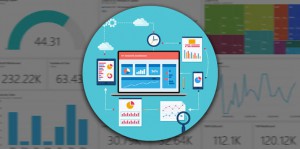Top 10 SEO Reporting Must-Reads

We’ve come to the end of our Ultimate Guide to SEO Reporting Series… but this is just the beginning of the road for you! At this point, it’s safe to say that you’re well aware of how important Search Engine Optimization is, and, of course, how important it is to track the proper KPIs in your reports in order to continually improve your strategy. Since our goal in life, the reason why we exist, is to make you an even bigger digital marketing star, we’ve put together a list of the top 10 must-reads to make sure you’re nailing this SEO reporting thing!
If you want to…
… Understand the factors that affect your SEO

(1) Learn Google’s 200 ranking factors
Google has a really elaborate algorithm that includes over 200 different ranking factors. It’s safe to say SEO is a complex science. Before getting into the details of your SEO reporting, it can be helpful to understand why you’re measuring your different KPIs, and what each factor is used for. Backlinko put together Google’s 200 Ranking Factors: The Complete List to help you out!
… Get better at SEO reporting

(2) Read our entire guide to SEO reporting
It goes without saying that you should probably start with our Ultimate Guide to SEO Reporting. In our five other articles, we’ve covered everything from SEO reporting essentials, to what questions to ask yourself in order to create your best report, as well as how your finished report should look in order to best share your data with your audience. Start at the beginning with The Ultimate Guide to SEO Reporting: Starting with the Basics, and work your way forward!

(3) Know the KPIs you should be tracking
If you want some more details concerning the KPIs you should be tracking in your SEO report, our 14 SEO Metrics You Should Track with a Real SEO Reporting Tool delves into this.

(4) Remember all your SEO report essentials
In their Top 10 Essentials for SEO Reporting, Search Engine Watch lists the elements that you absolutely shouldn’t forget to include in your SEO reports: from the obvious ones like traffic and landing pages, to the less obvious like link metrics and ranking spread.
… Understand why SEO reporting is important in client-agency relations

(5) Generate recurring business with your reports
Your SEO reports are one of the most important tools you have in your arsenal for creating a strong, long-lasting relationship with each of your clients. In How to use Client Reporting to Create Recurring Business, we explain how presenting your SEO reports to your client base is actually a great way to get them to give you even more business over time.

(6) Get your clients to love your reports
One of the greatest concerns for agencies when they create SEO reports is that no one will actually take the time to look at them. Unfortunately, this concern isn’t exactly unfounded – bad reports are almost worse than no reports. Take a look at our 3 Simple Rules to Make Your Clients Love Your Reports, and you’ll know how to get your SEO reports to be an integral part of a positive client-agency relationship.

(7) Understand what your clients want from your reports
Your reports aren’t for you, they’re for your clients. So you need to ask yourself: “why do they need these reports”, “what are they getting out of them”? Ignite Visibility published a great piece, SEO Reporting the Right Way, that not only explains what should be included in your SEO reports, but why these numbers actually matter to your clients in the first place.
… Choose the right reporting tool for you

(8) Pinpoint what your SEO reporting needs are
We’re obviously partial to DashThis (to say otherwise would just be silly!), but there are a myriad of options out there! Apart from part 4 of our Ultimate Guide to SEO Reporting, SEO: Manual Reporting vs. Automated Reporting, which helps you determine if an automated tool is better for you than a manual one, SEO Client Dashboards: What Reporting Tool to Use tells you what questions to ask yourself to make sure you find the solution that fits your needs and your business.

(9) Scope out your choices
CodeCondo has a great run-down of the top 10 Best Tools to Build an Analytics Dashboard. Each one has its own unique strengths and features, so it’s important to get a feel for them and see which one is best for what you’re looking for.

(10) Be realistic about your needs and abilities
In Stéphane Hamel’s The Best Data Visualization Solution for Radical Analytics, he breaks down your possible solutions into 3 categories based on ease of use and customization power. This can help you pinpoint the kind of tool you need depending on how much time you’re willing to spend in learning how a system works… and whether or not this time and effort is actually worth it for your business, or if an out-of-the-box tool is perfect for you.
How about you? What are your favourite sources for tips of the SEO reporting trade?
Ready to automate your reporting?
Read More
Don’t miss out!
Automate your reports!
Bring all your marketing data into one automated report.
Try dashthis for free

